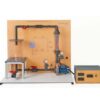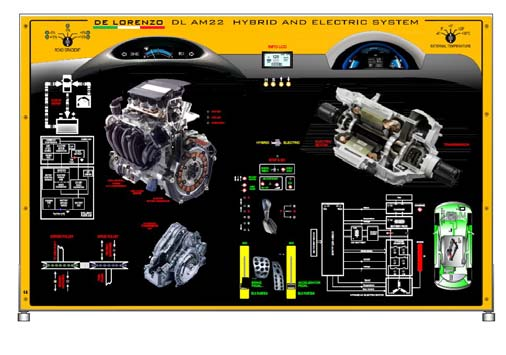Hybrid system
Gasoline Unit, including:
Gasoline Engine, with a bank of 4 cylinders and multipoint sequential injection
i‐DSI: Intelligent Double Sequential Ignition
i‐VTEC: Intelligent Variable‐valve Timing and Electronic‐lift Control
Engine ECU (electronic control unit for managing the thermal motor) Electric Unit, composed of:
Synchronous Three‐phase Electric Motor / Generator with permanent magnets
Eco Assist System Continuously Variable Transmission (CVT) Dual‐Scroll Hybrid A/C Compressor Intelligent Power Unit, that includes:
Battery Module, composed of Ni‐MH cells
Battery ECU, electronic control unit for managing and controlling the charging state (SOC) of the Battery Module
Cooling Fan, for cooling the battery module
Motor Control Module, for the synchronization of the electric motor with the petrol engine
Electric Power Unit, with inverter for power supplying the electric motor and AC/DC converter for the current supplied by the motor operating as a generator
DC Unit, it regulates the quantity y of direct current at 12 V supplied by the DC‐DC converter
A/C Driver, for managing the Dual‐Scroll Hybrid A/C Compressor
Electric System
The sub‐systems that form the fully electric solution, that are analyzed through the simulator and that are represented on the synoptical panel are the following:
High‐voltage battery module, made of Li‐ion cells
Recharging system with external alternate voltage
12 Volt battery and its recharging
Electric motor control system
Three‐phase inverter for controlling the electric motor
Inverter control signals and voltage and current measurement sensors
Three‐phase AC motor with integrated transmission system
Integrated sensors in the AC three‐phase motor
The simulator is complete with Training Software and with Control Software. The Training Software guides the student through the following phases: learning, simulation and experiments performance, tests and troubleshooting.
















